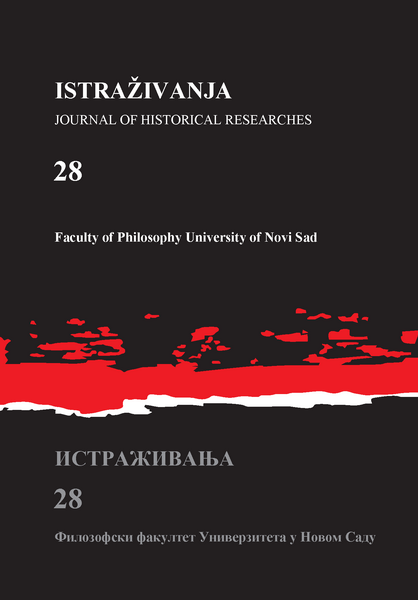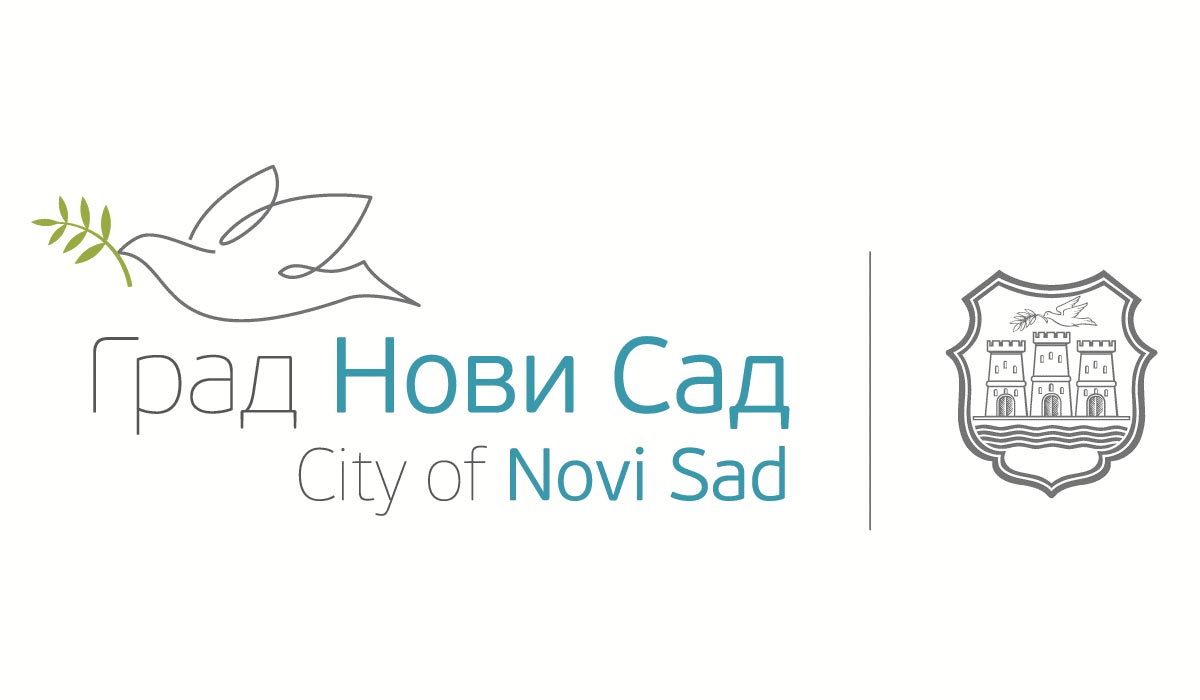ABOUT SEX. VIBIUS GALLUS OF AMASTRIS
DOI:
https://doi.org/10.19090/i.2017.28.52-68Keywords:
Amastris, elites of Greek poleis, Roman army, bilingualism, veteransAbstract
Sex. Vibius Gallus, trecenarius, primus pilus and praefectus castrorum legionis XIII Geminae, a highly decorated soldier who had served under Domitian and Trajan, chose to settle down in the small Greek polis of Amastris in the province of Pontus et Bithynia. His descendants and wider family are to be found among the elites of this city and at least one other, Abonuteichos, holding high office, sponsoring buildings, granting benefactions. It is generally assumed that Vibius Gallus was an Amastrian by birth and that, after completing his military service, he chose to return and settle in his home city. This paper attempts to disprove this assumption. It discusses his military career, his family, the language of his inscriptions and details of the several monuments set up by himself and his family, in order to show that he was originally from one of the Western provinces and that his choice of Amasra as his home turned him into the ancestor of a new family among the elites of a Greek city.
Downloads
References
Adams, J. N., Janse, M. und Swain, S. (Hrsg.) Bilingualism in Ancient Society. Language Contact and the Written Text, Oxford: Oxford University Press, 2002.
Ameling, W. ʽDas Archontat in Bithynien und die lex provinciae des Pompeiusʼ, Epigraphica Anatolica, 3, 1984, 19–31.
Benea, D. ʽUn posibil episod din vremea războaielor marcomanice în sud-vestul Daciei romaneʼ, Apulum, 43/2, 2011, 203–215.
Bingham, S. The Praetorian guard. A history of Rome’s elite special forces, London: I. B. Tauris, 2013.
Biville, F. ʽThe Graeco-Romans and Graeco-Latin: A terminological Framework for Cases of Bilingualismʼ, in: J. N. Adams, M. Janse und S. Swain (Hrsg.) (2002). Bilingualism in Ancient Society. Language Contact and the Written Text, Oxford: Oxford University Press, 2002, 77–102.
Corsten, T. ʽProsopographische und onomastische Notizen IIIʼ, Gephyra, 4, 2007, 133–144.
Derks, T. und Roymans, N. ʽReturning auxiliary veterans: some methodological considerationsʼ, Journal of Roman Archaeology, 19, 2006, 121–135.
Dobson, B. Die Primipilares: Entwicklung und Bedeutung, Laufbahnen und Persönlichkeiten eines römischen Offiziersranges, Köln: Rheinland-Verlag, 1978.
Dobson, B. und Breeze, D. J. ʽThe Rome cohorts and the legionary centurionateʼ, Epigraphische Studien, 8, 1969, 118–122.
Durry, M. Les cohortes prétoriennes, Paris: De Boccard, 1938.
Eck, W. ʽThe presence, role and significance of Latin in the epigraphy and culture of the Roman Near Eastʼ, in: H. M. Cotton, R. G. Hoyland, J. J. Price und D. J. Wasserstein (Hrsg.), From Hellenism to Islam. Cultural and linguistic change in the Roman Near East, Cambridge: Cambridge University Press, 2009, 15–42.
______. ʽDas römische Heer und die kleinasiatischen Provinzen während der Hohen Kaiserzeitʼ, in: J. Fischer (Hrsg.), Der Beitrag Kleinasiens zur Kultur- und Geistesgeschichte der griechisch-römischen Antike. Akten des Internationalen Kolloquiums Wien, 3.- 5. November 2010 (Ergänzungsbände zu den Tituli Asiae Minoris 27), Wien: Verlag der Österreichischen Akademie der Wissenschaften, 2014, 87–97.
Forni, G. Il reclutamento delle legioni da Augusto a Diocleziano, Milano: Fratelli Bocca, 1953.
______. ʽEstrazione etnica e sociale dei soldati delle legioni nei primi trei secoli dell‘ Imperoʼ, Aufstieg und Niedergang der römischen Welt, II1, 1974, 339–391.
Hall, A. S. ʽTwo veterans of legio XIII Gemina at Iconiumʼ, in: S. Mitchell (Hrsg.), Armies and frontiers in Roman and Byzantine Anatolia: proceedings of a colloquium held at University College, Swansea, in April 1981, Oxford: BAR, 1983, 35–39.
Hampl, F. ʽZur römischen Kolonisation in der Zeit der ausgehenden Republik und des frühen Prinzipatsʼ, Rheinisches Museum, 95, 1952, 68–75.
Kearsley, R. A. Greeks and Romans in Imperial Asia. Mixed language inscriptions and linguistic evidence for cultural interaction until the end of AD III (Inschriften griechischer Städte aus Kleinasien 59), Bonn: Habelt, 2001.
Leschhorn, W. Antike Ären: Zeitrechnung, Politik und Geschichte im Schwarzmeerraum und in Kleinasien nördlich des Tauros, Stuttgart: Franz Steiner, 1993.
Levick, B. ʽThe Latin inscriptions of Asia Minorʼ, in: H. Solin, O. Salomies und U.- M. Liertz (Hrsg.), Acta colloquii epigraphici Latini : Helsingiae 3.-6. sept. 1991 habiti (Commentationes humanarum litterarum 104), Helsinki: Societas Scientiarum Fennica, 1995, 393–402.
Maier, Chr. ʽEin Stein aus dem kaiserlich ottomanischen Museum in Stambul: Sextus Vibius Gallus im Kampf mit den Dakernʼ, in: E. Christof, G. Koiner, M. Lehner und E. Pochmarski (Hrsg.), Potnia theron. Festschrift für Gerda Schwarz zum 65. Geburtstag, Wien: Phoibos, 2007, 247–260.
Mann, J. C. ʽTrecenariusʼ, Zeitschrift für Papyrologie und Epigraphik, 52, 1983, 136–140.
Marek, Chr. Stadt, Ära und Territorium in Pontus-Bithynia und Nord-Galatia, Tübingen: Wasmuth, 1993.
______. Geschichte Kleinasiens in der Antike, München: C. H. Beck, 2010.
Maxfield, V. A. The military decorations of the Roman army, London: Batsford, 1981.
McLean, B. H. Greek and Latin inscriptions in the Konya Archaeological Museum, London: British Institute of Archaeology at Ankara, 2002.
Mendel, G. Catalogue des sculptures grecques, romaines et byzantines III, Constantinople: Musées Impériaux Ottomans, 1914.
Mitchell, S. ʽIconium and Ninica. Two Double Communities in Roman Asia Minorʼ, Historia, 28, 1979, 409–438.
______. ʽThe Balkans, Anatolia, and Roman armies across Asia Minorʼ, in: S. Mitchell (Hrsg.), Armies and frontiers in Roman and Byzantine Anatolia: proceedings of a colloquium held at University College, Swansea, in April 1981, Oxford: BAR, 1983, 131–150.
______. Anatolia. Land, men, and gods in Asia Minor I. The Celts and the impact of Roman rule, Oxford: Clarendon Press, 1993.
______. ʽThree cities in Pisidiaʼ, Anatolian Studies, 44, 1994, 129–148.
Mitford, T. B. ʽInscriptiones Ponticae: Sebastopolisʼ, Zeitschrift für Papyrologie und Epigraphik, 87, 1991, 181–243.
Mitford, T B. ʽThe inscriptions of Satala (Armenia Minor)ʼ, Zeitschrift für Papyrologie und Epigraphik, 115, 1997, 137–167.
Moga, V. ʽPrefecţi ai castrului legiunii XIII Gemina la Apulumʼ, Apulum, 13, 1975, 651–657.
______. Din istoria militară a Daciei romane. Legiunea XIII Gemina, Cluj: Dacia, 1985.
Passerini, A. Le coorti pretorie, Rom: A. Signorelli, 1939.
Piso, I. Les légions dans la province de Dacie, in: Y. Le Bohec, C. Wolff (Hrsg.), Les légions de Rome sous le haut-empire : actes du congrès de Lyon (17-19 septembre 1998), Paris: Boccard 2000, 203–224.
Raeder, J. ʽVeteranenstolz und Frauenlob. Zu einem Sarkophagfragment aus Sinopeʼ, in: H. Börm, N. Ehrhardt und J. Wiesehöfer (Hrsg.), Monumentum et instrumentum inscriptum. Beschriftete Objekte aus Kaiserzeit und Spätantike als historische Zeugnisse. Festschrift für Peter Weiß zum 65. Geburtstag. Stuttgart: Franz Steiner, 2008, 177–185.
Raepsaet-Charlier, M.- T. ʽLe lieu d’installation des vétérans auxiliaires romains dʼaprès les diplômes militairesʼ, L’Antiquité Classique, 47/2, 1978, 557–565.
Rémy, B. ʽNotes de lecture: soldats de Cilicie sous l’Empire romainʼ, Epigraphica Anatolica, 10, 1987, 107–109.
Ritterling, E. ʽLegioʼ, in: G. Wissowa (Hrsg.), Realencyclopädie der classischen Altertumswissenschaft XII, Stuttgart: J. B. Metzlersche Verlagsbuchhandlung, 1925, Sp. 1186–1838.
Rizakis, A. ʽLe grec face au latin. Le paysage linguistique dans la péninsule balkanique sous l'empireʼ, in: H. Solin, O. Salomies und U.- M. Liertz (Hrsg.), Acta colloquii epigraphici Latini: Helsingiae 3.-6. sept. 1991 habiti (Commentationes humanarum litterarum 104), Helsinki: Societas Scientiarum Fennica, 1995, 373–391.
Robert, L. Villes d’Asie Mineure2, Paris: Boccard, 1962.
Roxan, M. M. ʽFindspots of military diplomas of the Roman auxiliary armyʼ, University College London Institute of Archaeology Bulletin, 26, 1989, 127–181.
Russu, I. I. ʽSextus Vibius Gallusʼ, Acta Musei Napocensis, 8, 1971, 531–537.
Scheidel, W. ʽRoman age structure: evidence and modelsʼ, Journal of Roman Studies, 91, 2001, 1–26.
______. ʽRoman funerary commemoration and the age at first marriageʼ, Classical Philology, 102/4, 2007, 389–402.
Solin, H. ʽDie Herkunft des numidischen Legaten Ti. Claudius Subatianus Proculusʼ, Zeitschrift für Papyrologie und Epigraphik, 119, 1997, 245–248.
Speidel, M. Die equites singulares Augusti: Begleittruppe der römischen Kaiser des 2. und 3. Jahrhunderts, Bonn: Habelt, 1965.
______. Die Denkmäler der Kaiserreiter: equites singulares Augusti, Köln: Rheinland-Verlag, 1994.
Speidel, M. A. ʽThe development of the Roman forces in northeastern Anatolia. New evidence for the history of the exercitus Cappadocicusʼ, in: M. A. Speidel, Heer und Herrschaft im Römischen Reich der Hohen Kaiserzeit, Stuttgart: Franz Steiner Verlag, 2009, 595–631.
______. ʽConnecting Cappadocia. The contribution of the Roman Imperial armyʼ, in: V. Cojocaru, A. Çoşkun und M. Dana (Hrsg.), Interconnectivity in the Mediterranean and Pontic world during the Hellenistic and Roman Periods, Cluj: Mega Publishing House, 2014, 625–640.
Speidel, M. P. ʽLegionaries from Asia Minorʼ, Aufstieg und Niedergang der römischen Welt, II7, 1980, 730–746.
______. ʽThe Roman army in Asia Minor, recent epigraphical discoveries and researchʼ, in: S. Mitchell (Hrsg.), Armies and frontiers in Roman and Byzantine Anatolia. Proceedings of a colloquium held at University College, Swansea, in April 1981 (BAR IS 156), Oxford: BAR, 1983, 7–34.
Speidel, M. P. und Reynolds, J. ʽA veteran of legio I Parthica from Carian Aphrodisiasʼ, Epigraphica Anatolica, 5, 1985, 31–35.
Wheeler, E. L. ʽRoman fleets in the Black Sea: mysteries of the classis Ponticaʼ, Acta Classica: Proceedings of the Classical Association of South Africa 55, 2012, 1, 119–154.
Woodward, A. M. ʽInscriptions from Western Pisidiaʼ, Annual of the British school at Athens, 17, 1911, 205–214.














